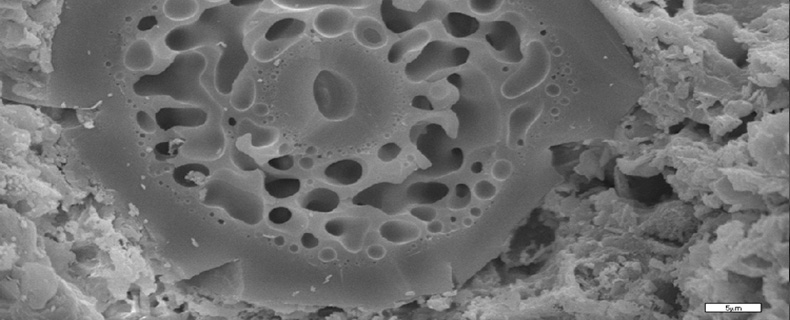| School |
Natural Sciences |
Academic Unit
|
Geology Department |
Level of Studies
|
Undergraduate |
Course Code
|
GEO_824E |
| Εξάμηνο σπουδών |
8ο |
Course Title
|
Nanogeosciences |
Independent Teaching Activities
|
Lectures, tutorials and laboratory work |
Weekly Teaching Hours
|
2 (lect.), 1 (lab.), 1 (Tut) |
| Credits |
5 |
Course Type
|
Field of Science (Nanogeoscience) |
Prerequisite Courses
|
Typically, there are not prerequisite course. Essentially, the students should possess:
knowledge provided through the previously taught courses : ‘Mineralogy I, Mineralogy II, Petrography I, Petrography II |
Language of Instruction & Examinations
|
Greek. Teaching may be however performed in English in case foreign students attend the course. |
Is the Course offered to Erasmus Students
|
Yes |
| Course Web-Page (URL) |
|
Learning Outcomes
|
At the end of this course the student should have knowledge of :
- The introduction to Nanogeoscience.
- The interdisciplinary character of the most important environmental applications of nanogeoscience.
- The most significant determination and characterization methods of nanocomposites
At the end of the course the student will have further developed the following skills/competences
- Ability to demonstrate knowledge and understanding of essential facts, concepts, principles and theories nanogeoscience
- Ability to apply such knowledge and understanding to the solution of problems of an unfamiliar nature.
- Ability to adopt and apply methodology to the solution of unfamiliarproblems.
- Study skills needed for continuing professional development.
- 5. Ability to interact with others on inter or multidisciplinary problems
|
General Competences
|
Autonomous work, Teamwork, Working in an interdisciplinary environment, Producing new research ideas, Respecting the natural environment |
| Syllabus |
- Introduction to nanogeoscience
- Occurrence and distribution of nanominerals and mineral nanoparticles in oceans
- Occurrence and distribution of nanominerals and mineral nanoparticles in surface waters
- Occurrence and distribution of nanominerals and mineral nanoparticles in soils
- Structure, Chemistry and properties of mineral nanoparticles
- Naturally occurring amorphous nanomaterials
- Nanoparticles in the atmosphere and their effects on climate and human health
- Nanoparticles in soils and rocks
- The effect of organic nanoparticles and microorganisms on weathering
- Nanomaterials beyond earth
- The interdisciplinary character of nanogeoscience
- The most important environmental applications of nanoparticles
- Identification and characterization methods in Nanogeoscience (XRD, SEM, DTA-TG, FT-Raman, Raman, FTIR, NMR).
|
| Delivery |
Lectures and laboratory work face to face. |
Use of Information & Communication Technology
|
Power Point, Laboratory exercises, examples |
Teaching Methods
|
| Activity |
Semester workload |
| Lectures (2 conduct hours per week x 13 weeks) |
2 X 13 = 26 |
| Laboratory work (1 conduct hour per week x 13 weeks) |
1 X 13 = 13 |
| Tutorial |
1 X 13 = 13 |
| Hours for private study of the student and preparation of home-works |
73 |
| Total number of hours for the Course |
125 |
|
Student Performance Evaluation
|
Written final examination and problem solving |
Attached Bibliography
|
- Peter Baláž: Mechanochemistry in Nanoscience and Minerals Engineering, 2008. 413 p.
Scientific Journals:
- Nature Geoscience,
- Nature Nanotechnology,
- ACS Nano,
- ACS Applied Materials and Interfaces,
- Environmental Science-Nano,
- Applied Catalysis B: Environmental,
- Applied Clay Science
|






























